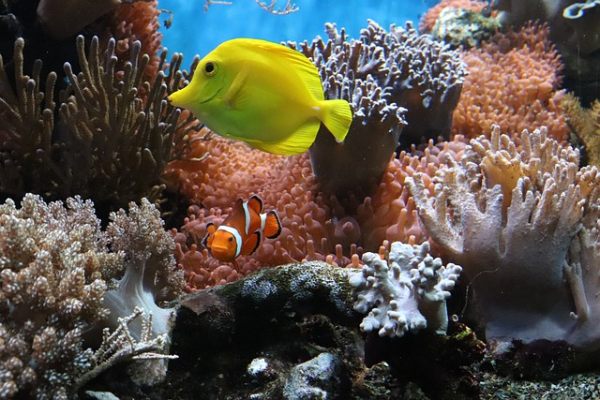Seas and oceans define this planet Earth in a unique way. They make it a blue planet and establish a connection between all the continents. The sea gives life.
It is the biggest converter of carbon dioxide and is crucial for the entire water cycle, it is habitat for uncountable numbers of animal and plant species and its fish are the basis of life for more than a billion people. However, this magnificent and vital ecosystem is under greatest distress today. It suffers from plastic and chemical pollution, it is radioactively contaminated and is massively overfished due to the excessive greed of mankind. Even mobile wireless communication does not stop at the sea. In future, the seas and coasts are to be fully monitored as a “Smart Ocean” by “underwater wireless communications”. This should enable gapless environmental monitoring, for example. But what is the point of environmental monitoring if it interferes with and disturbs the environment to such an extent that there can no longer be any question of protection?
Considering the reactivity of water to electromagnetic radiation, it is alarming that even the oceans and seas are now to be equipped with a dense mobile phone network. The new underwater mobile networks are based on sound, i.e. acoustic waves. However, whales and dolphins also communicate using sound. Underwater noise hinders their ability to communicate and orient themselves. How will marine life fare if “Smart Ocean” pollutes their habitat with additional noise and light emissions as well as electromagnetic radiation sources?
The influence of electromagnetic waves on the structure of seawater is another question mark. Nobody knows what effect the constant electromagnetic contamination will have on the extremely sensitive marine ecosystem. An ecosystem of which we have only investigated and studied about five percent!
The Greed for More
But that’s not all … now the seas and oceans are under threat from another side, namely by deep-sea mining. Why? Mining on land is a constant breeding ground of controversy. Issues such as deforestation, toxic tailings, the pollution of freshwater ecosystems and human rights violations are often mentioned in the same breath as mining. And… raw materials on land are limited and some are already running out. But there is one place where valuable raw materials, especially rare earths, are still available in abundance – the deep sea.
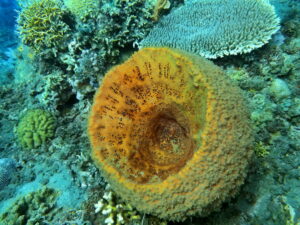
The deep sea begins at a sea depth of 200 metres and accounts for 95 percent of the total volume of the world’s oceans. This makes the deep sea the largest ecosystem on our planet! The deep sea has hardly been explored, as darkness, cold and enormous pressure prevail here. Sunlight only penetrates through the upper layers of water. From a depth of 200 meters, photosynthesis and therefore plant growth is no longer possible. Under these hostile conditions, a wonderful world has developed in the deep sea with a multitude of highly specialized species. Some species have developed special and fascinating adaptations to the dark, such as bioluminescence (the production of light) to attract prey or potential sexual partners
Due to its special nature, the deep sea and its inhabitants is a highly sensitive ecosystem. At the same time, the deep sea holds precious treasures that have aroused human desires.
“Black Smokers”, Submarine Mountains and Deep-Sea Basins
The three main sources of raw materials at depths of 3 to 5 kilometres include the so-called “Black Smokers”, the submarine mountains and the deep-sea basins with manganese nodule fields. The “Black Smokers” are interesting for deep-sea mining because of their gold, silver and copper deposits. “Black smokers” form in hydrothermal fields where the Earth’s crust is very thin. Water penetrates into the hot basalt and magma zones lying close to the seabed. The water is then expelled again through chimney-like openings at temperatures of several hundred degrees Celsius. In contact with the cold seawater, many metals that are of interest to industry precipitate. However, the “Black Smokers” are at the same time the most densely populated habitats in the deep sea. On them, up to 300 different species have been found, many of which are endemic. They therefore only occur in “their” hydrothermal field. If the “Black Smokers” are destroyed, these unique communities will perish.
In the areas of the submarine mountains, on the other hand, the 5-10 centimetre-thick crusts with their high manganese and cobalt content are particularly attractive. …. And they are also teeming with life. The seamounts are veritable gardens of corals and sponges, inhabited by various crustaceans, starfish, deep-sea mussels and other organisms. Attracted by the many prey animals and the good spawning and hiding places, most of the fish of the deep-sea live in and around the seamounts.
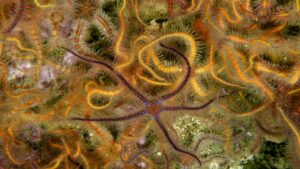
Most of the focus of deep-sea mining is on the deep-sea basins at a depth of around five kilometres. Here too, diverse living communities have formed that are adapted to the special conditions at these great depths, for example sponges, sea cucumbers, various species of octopus and many bottom dwellers. The sought-after manganese nodules found there are between one and 20 centimetres in size and an incredible 3 to 4 million years old. They only grow a few centimetres in a million years! However, only 3 percent of such an ancient, unique formation consists of manganese, which is valuable for industry, as well as nickel, copper, cobalt, lithium and rare earth metals.
For some deep-sea species, such as small corals, brittle stars and small crustaceans, manganese nodules are vital. Because the nodules form the only solid substrate in the soft sediment, these specialized creatures can only settle on the nodules.
Destroyed Beyond Repair
All three areas intended for deep-sea mining are therefore true biodiversity hotspots. They are very sensitive habitats that have developed over millions of years. 90 percent of the deep-sea inhabitants found there live in the top 10 centimetres of the seabed. The fact that their survival is acutely endangered becomes clear when we look at how deep-sea mining is taking place:
To get to the valuable manganese nodules, deep-sea robots weighing several tons plough up the seabed. They completely remove the top 10 centimetres of the seabed, practically the entire habitat of the deep-sea creatures. German ocean researchers launched a special long-term experiment as early as 1989, to investigate the long-term effects of deep-sea mining on the biodiversity of the deep sea: the JPI Oceans Mining Impact project. In the Peru Basin, the researchers completely ploughed up the seabed over an area of 11 square kilometres. In 2015, the researchers on board the research vessel “Sonne” returned to the coastal waters off Peru. They wanted to find out how the area they had plowed up 26 years earlier had developed.
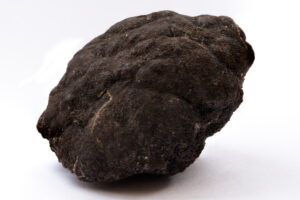
Their findings were as clear as they were shocking: The flora and fauna had still not recovered in a quarter of a century. The plough tracks were still as clearly visible as if they had been made just the day before. The fauna and flora of the deep sea have not been able to recover even after decades because the food flow at this depth is so low and the organisms’ metabolism is very slow due to the darkness and cold. A small octopus, for example, takes two years to hatch its eggs. If this small octopus had bred in the Peru Basin, neither it nor its fry would have survived the deep-sea researchers’ experiment. The damage to its habitat, the manganese nodules, is permanent because the nodules only grow back after a few million years. The research in the Peru Basin showed that 90 percent of the microorganisms had disappeared. What’s more, entire faunal classes had been damaged.
To put it very clearly: the plowing up of the seabed had resulted in the large-scale, lasting destruction of entire ecosystems. And neighboring areas are also permanently disturbed. The plowing of the seabed stirs up sediments. These turbidity clouds extend up to 30 kilometres. As the sediments sink, animals settling on the seabed or on nodules are buried under the mud. In addition, the vital functions of creatures that filter their food from the water – such as corals, sponges, fish or larvae – are impaired. Any heavy metals released are an additional burden.
The heavy machinery and equipment required for deep-sea mining are also an additional source of noise. Sound travels quickly underwater, over long distances and in all directions. This can directly injure marine animals or disrupt their communication, foraging or orientation.
It is still unclear how deep-sea mining will affect CO2 storage in the oceans. It is conceivable that their highly important function for the Earth’s climate will be disrupted.
Authority with Conflicts of Interest
But where should deep-sea mining even take place? Deep-sea mining is already permitted in national waters. The legal basis for commercial mining in international waters is expected to be issued in 2025 as part of the regulations of the International Seabed Authority. For research purposes, the authority has already issued several dozen permits. Large-scale deep-sea mining is planned, particularly in the Clarion-Clipperton Zone. The Clarion-Clipperton Zone is the largest known deposit of metal deposits on our planet. It is located in the Pacific Ocean between Hawaii and the Mexican coast and covers an area of 4.5 million square kilometres, which is roughly equivalent to the land area of all member states of the European Union.

The aforementioned International Seabed Authority regulates all activities related to mineral resources on and in the international seabed. Its task is to ensure the protection of the marine environment from the harmful effects of deep-sea mining. At the same time, however, it issues licenses that authorize the exploration of the international seabed. The authority’s approach is therefore controversial. Experts and conservationists repeatedly criticise the International Seabed Authority for putting the protection of the marine environment on the back burner in favour of the extraction of raw materials from the deep sea.
We must be aware of this: What can be regenerated on land in ten to twenty years through reforestation, takes several hundred, perhaps even thousands of years in the deep sea. As shown, irreversible species losses and irreversible damage to ecosystems are to be expected. Whether it’s a small, recently discovered starfish or another species, they would disappear never to be seen again. For many species, we would not even know that they ever existed …
The Dark Side of the “Green Transition”
Something is often forgotten: The hunger for raw materials is being massively fueled not least by the “Green Transition”, which should actually help to protect our planet. For example, electric vehicles require at least four times the amount of metals such as nickel, manganese, cobalt or copper compared to petrol or diesel vehicles. If all cars in Europe were to be electric by 2040 and use the same type of batteries as the Tesla Model 3, the demand for cobalt would be 28 times higher than the amount currently produced.
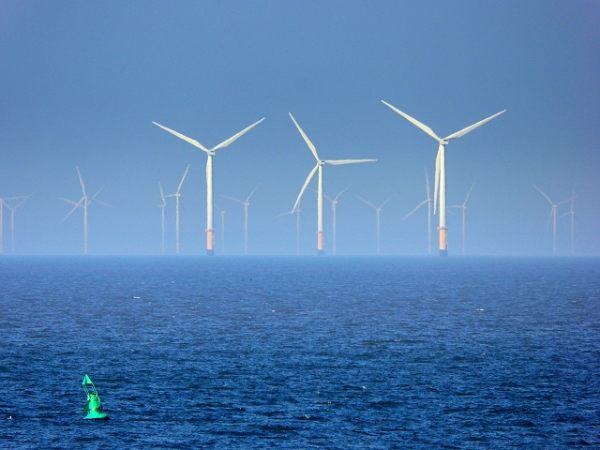
Wind turbines are also raw material consumers. For example, 4.7 tons of copper and 2 tons of rare earths are needed to build a single 3-megawatt wind turbine. And let’s not forget all our digital devices such as laptops, tablets and smartphones. Almost half of every cell phone consists of valuable metals such as copper, aluminum, nickel, tin, gold, silver, platinum, cobalt and rare earths. Do we really need the latest smartphone model every year?
The contribution of deep-sea mining to more sustainable raw material extraction is more than questionable and it is disputed whether deep-sea mining is necessary at all. Better solutions for dealing with the scarcity of resources would be the more efficient usage of raw materials, increased recycling quotas and, in particular, the urgently needed expansion of a circular economy. Moreover, the planned deep-sea mining will most likely not replace mining, but simply place an additional burden on the planet.
The Oceans – The Common Heritage of All Mankind
Fortunately, there is a growing awareness that we cannot simply invade the next ecosystem and exploit and damage it in the same way we have already done to other ecosystems. In 2021, a majority of members of the International Union for Conservation of Nature (IUCN) voted for a moratorium on deep-sea mining at its World Conservation Congress and also called for a reformation of the International Seabed Authority. And meanwhile, numerous environmental organisations, the European Parliament, some Pacific island states and the fishing industry are also calling for a global moratorium on deep sea mining until the environmental, social and economic impacts have been thoroughly analysed.
The United Nations Convention on the Law of the Sea (UNICLOS) defines the international seabed as the common heritage of mankind. This means that the oceans concern each of us and all of us together, because everything is connected to everything else.
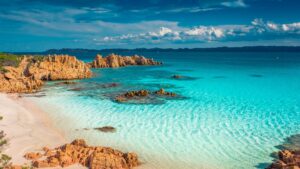
Let’s remember: the oceans regulate the planet’s climate and produce most of its oxygen. Millions of people depend on a healthy marine ecosystem for their livelihoods. The sea and the oceans are vital for survival on this planet.
Let’s not allow human greed to irreversibly damage this unique ecosystem, the largest on planet Earth. Let’s protect the oceans!
Article published with permission from The World Foundation for Natural Science

